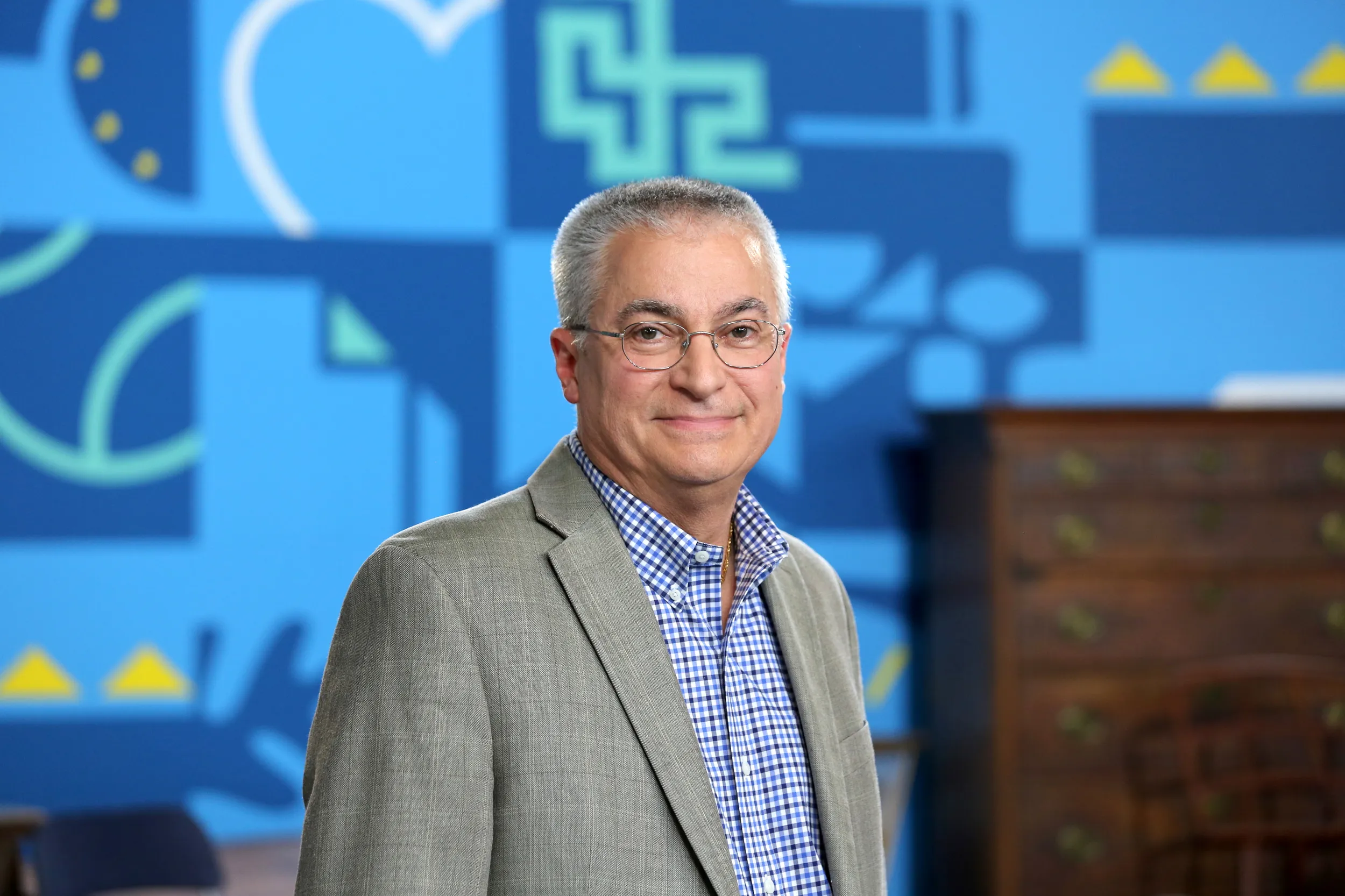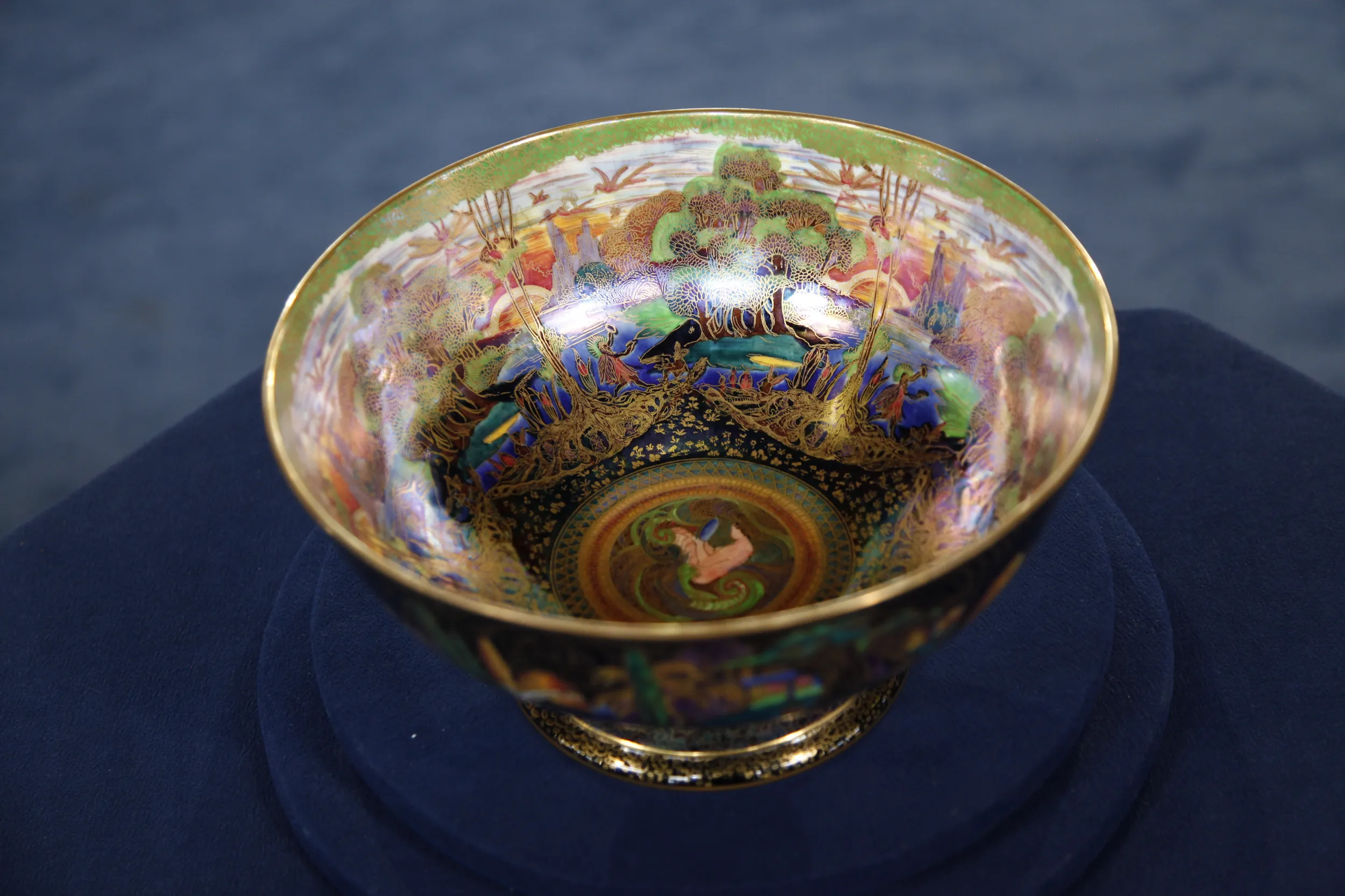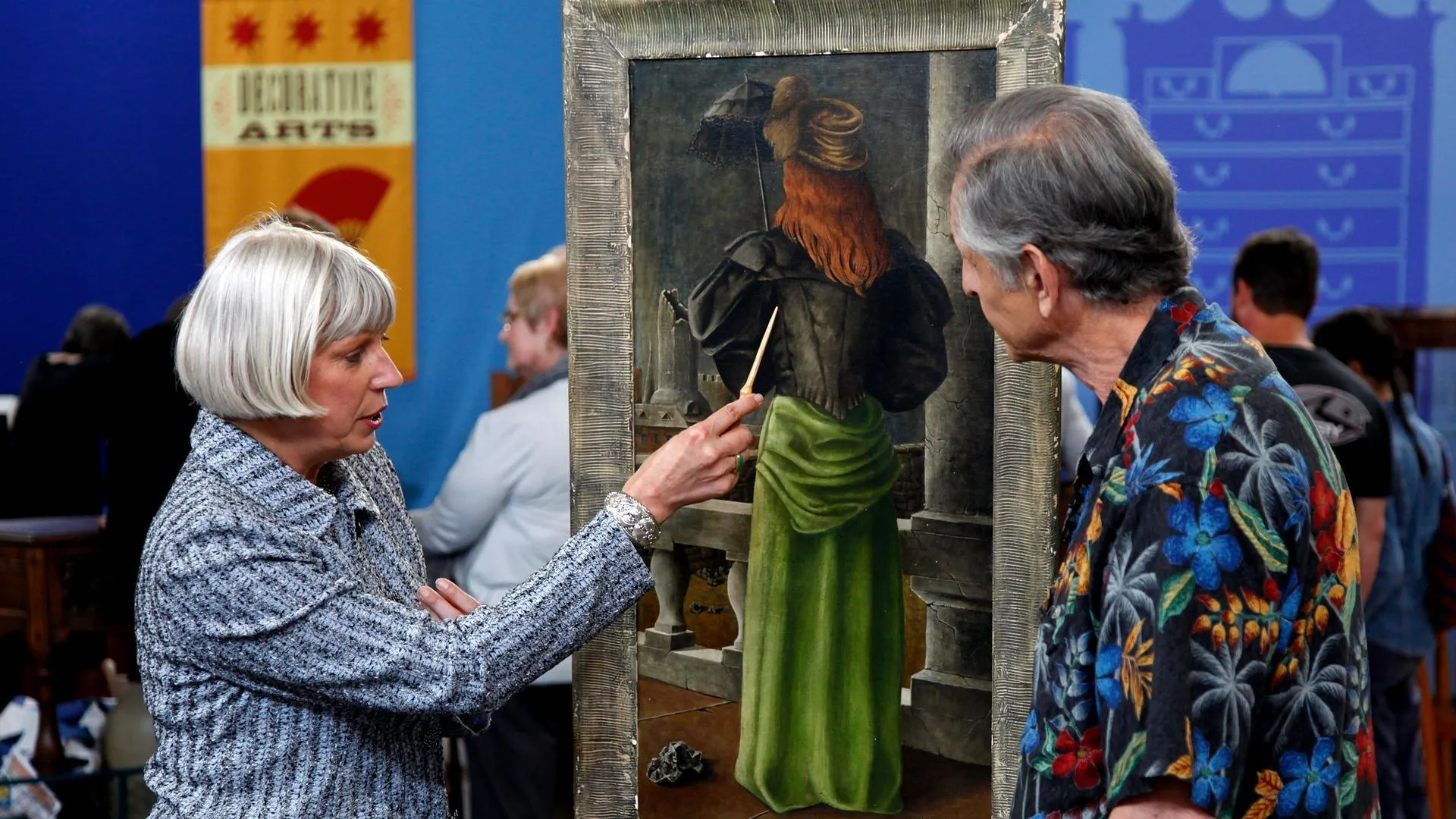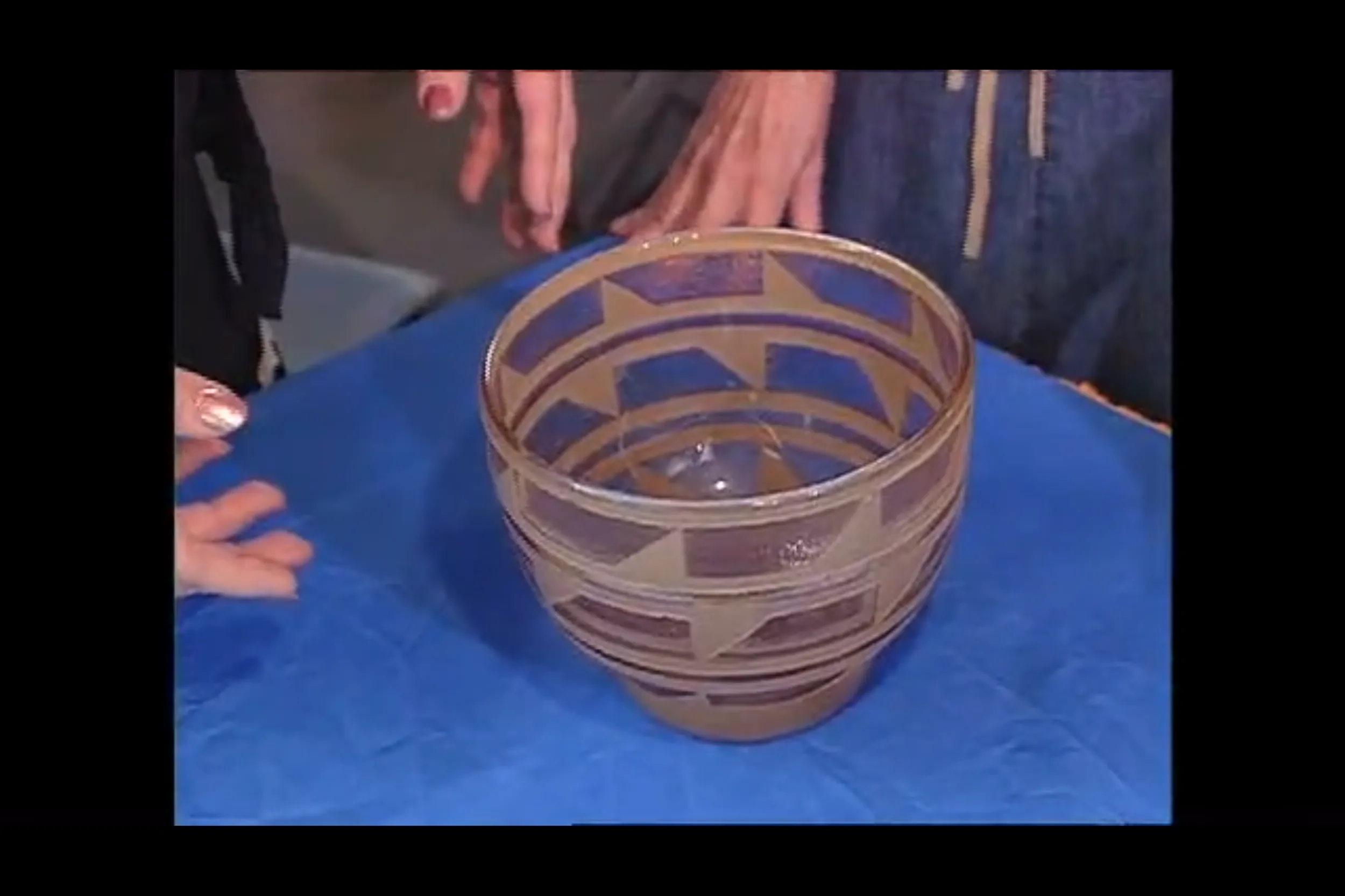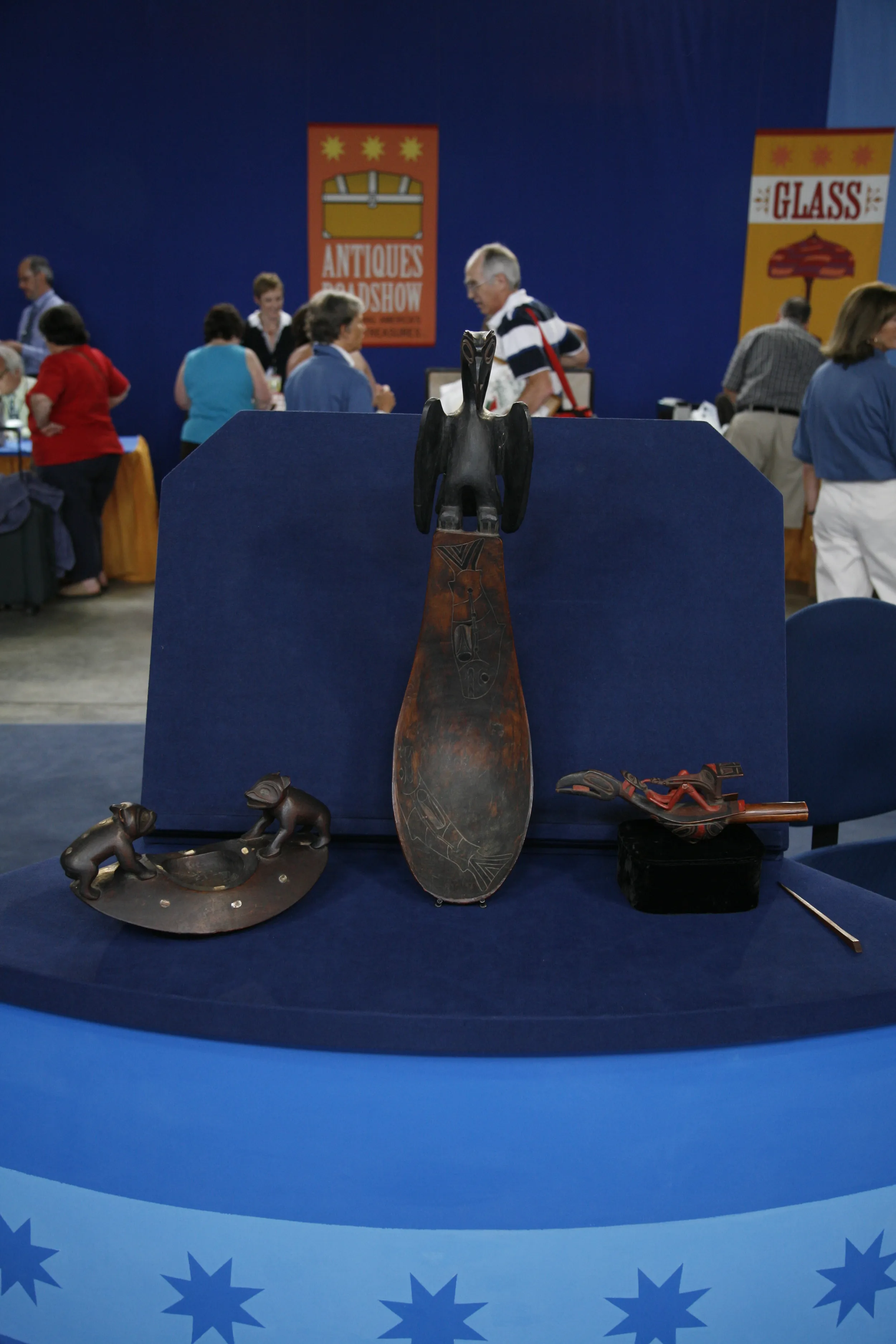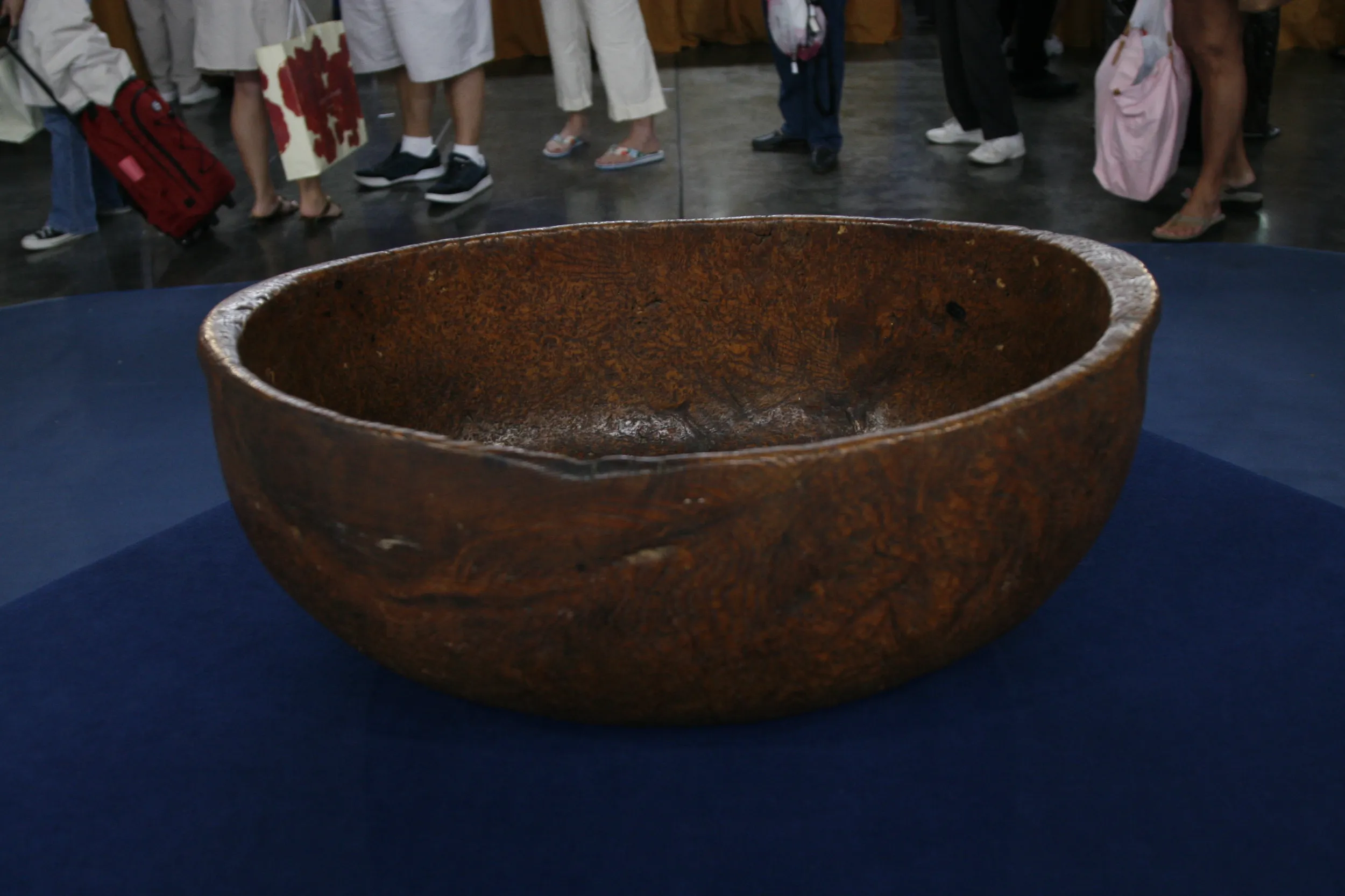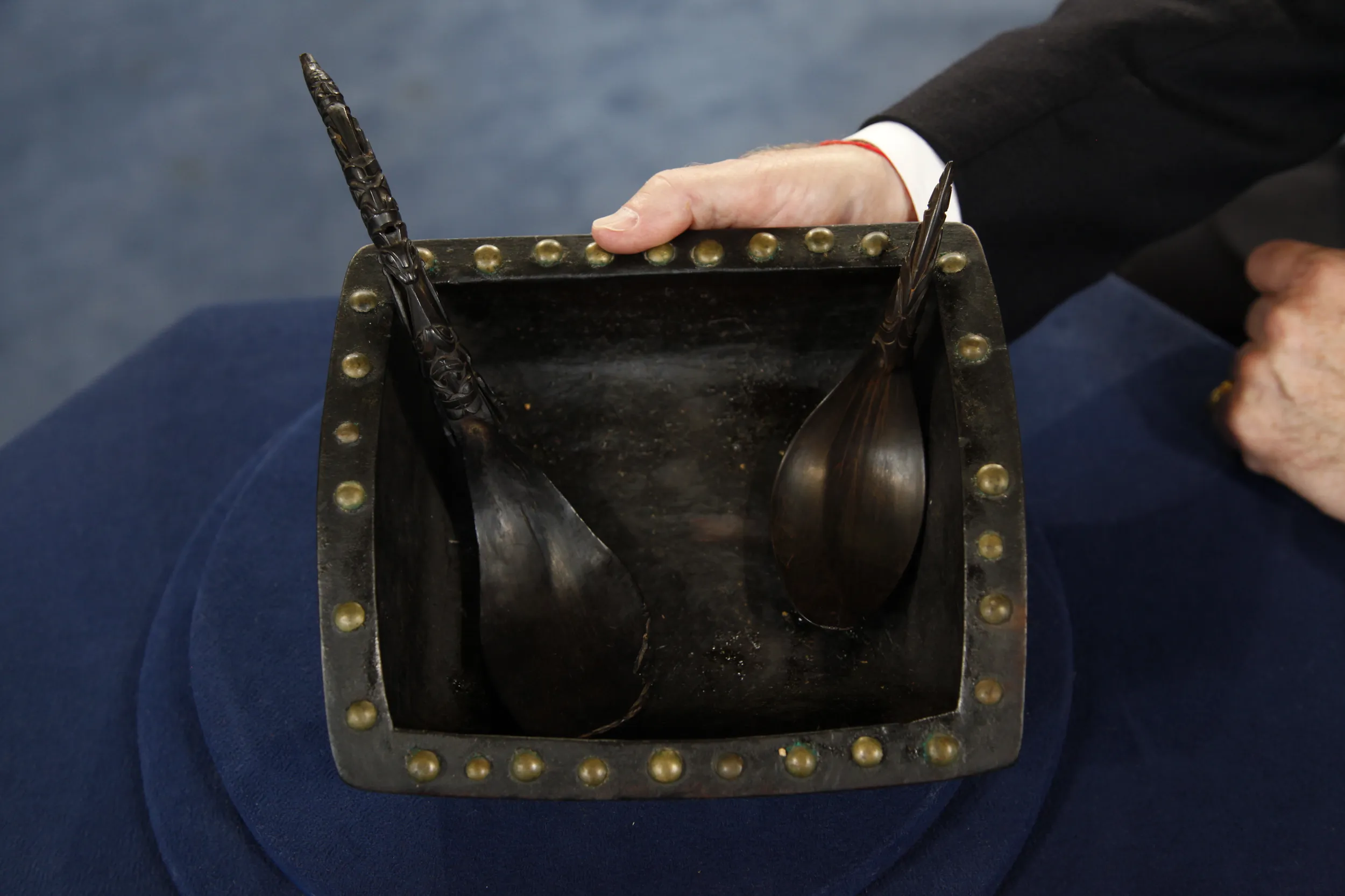GUEST: I know that it's by Wedgwood and that the decoration is known as Fairyland Lustre, and the woman who created this worked for Wedgwood for a time and loved children and was very childlike herself. And I know this because of the book that came with the bowl.
APPRAISER: Now tell me, where did you acquire the bowl?
GUEST: Well, my mother and a neighbor fostered a love of Wedgwood in me. My mother had a few pieces and the neighbor had quite a few pieces, and about 12 years ago, the neighbor gave me this bowl.
APPRAISER: You're absolutely right. It is Fairyland Lustre made on Wedgwood's bone china. Very faintly here is the Wedgwood mark. It has what's called a Portland Vase. And this printed symbol represents Wedgwood's mark for bone china. Then you have this inscription on the outside, which I've never seen before. And it says, "Infants Welfare Centre, Hanley, T.W. Twyford. T.W. Twyford was also a potter in Staffordshire, not far from where Wedgwood was manufacturing. Just at the end of World War I, he established this society to take care of children-- mostly to do with the war effort initially, and then it continued on to just take care of any child that needed help. We have here a date, December 9, 1930. I have no idea what that date is. Twyford passed away prior to that date. Now, the days that Makeig-Jones worked at Wedgwood on this wonderful Fairyland Lustre, from about 1917 to about 1931. So this 1930 date would be still within the context of her working at Wedgwood, but also right at the very end of when she worked at Wedgwood. She was a very, very eccentric woman. In fact, so eccentric that she was not liked by the other people working in the factory. She actually was known to have a little kiln in her studio, and it wasn't for firing ceramics, it was for making a grilled cheese sandwich every day. (laughs) The inside of this bowl is just wonderful. Beautifully designed. Wedgwood had a number of different patterns of Fairyland Lustre, and not only is this an interesting pattern, but there's a little monogram there, which is her signature. They're not usually as easy to find as they are on this bowl. The outside pattern is called "Poplar Trees." And there are many pattern designs that you'll find in the books on Fairyland Lustre that would help represent it. Now, condition is amazing. Not just the fact that the bowl is in great shape-- no cracks, no chips-- but the iridescence of the enamel and the quality of the gilding is just absolutely perfect. It may not have been the nicest piece of Fairyland Lustre I've ever seen, but it's on a par with the nicest quality piece of Fairyland Lustre I've ever seen. Wedgwood market is very national and international. It extends all the way to Japan and Australia, throughout England and certainly across America, where some of the biggest collections are. Amongst all of the different types of ware that have been made over the 250-year period of Wedgwood, some categories have gone up, some categories have gone down. Fairyland has not only maintained its value, but has increased its value tremendously over the last 25 years. Forty years ago, people weren't buying it. It was considered too new. At auction today, this bowl would realize between $10,000 and $15,000. And if you're going to insure it, it would probably be best to insure it closer to $20,000.
GUEST: Are you serious?
APPRAISER: Absolutely. It's a wonderful example, and I'm thrilled that you brought it in today.
GUEST: I'm just speechless!
